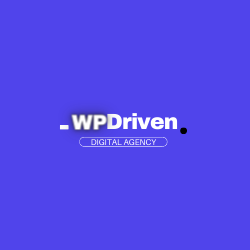The website layout is an essential concern and therefore should not be ignored. You can make a positive first impression on your potential customers with a well-designed website. It can also assist you in establishing your customers and increasing the number of sales you receive.
But even more important, it gives your website visitors a good experience and makes it easier for them to get around and use your site. If you want a successful website, you must build it with the needs of your target audience in mind.
How To Design a Website Layout; Step by Step Guide
Your new website’s primary goal should be clearly defined before you begin to design the website layout. Why did you decide to make this website? What role does it have to play? You may wish to build an online store, a blog, a landing page, a resume, an event website, or even a brand website.
And each of them can be just as significant as the one before it. Even though the pages, copy, and graphics on each one will be unique, the process of completing each one is the same for all of them.
Review current website design trends
The field of web design is always changing. However, you can observe some common patterns. It’s important to remember that just because something is popular on the web doesn’t mean it’s suitable for you.
You need to spend your time researching what your competitors are doing because the design is the most significant component of a website. What matters most is knowing whether or not your goal is to fit in or shake things up in your field.
Select the Platform for Your Website
Choosing the platform for your website is the next step once you’ve decided what kind of site you want to build. There are a lot of options out there, but we’ve done the work and looked for the best ones on the market.
- All you need to know about WordPress is that it’s the most popular platform for building websites. Using WordPress, you have complete creative control over the appearance of your website. There are a lot of costs associated with getting your website up and running; these include web hosting and a domain name, as well as the cost of additional plugins and themes.
- Wix is widely considered to be the best website builder on the market. When it comes to adding and positioning your content, the drag-and-drop editor is simple to use, giving you full creative power.
- When it comes to creating a website, Squarespace stands out as having an image of smoothness and a high-end appearance. Squarespace takes great care in the quality of its designs. Photographers, artists, and graphic designers will appreciate their artistic designs, which make them ideal for them.
- In spite of the fact that Weebly is promoted as a website builder for everyone, it primarily focuses on small company websites. You can choose from a wide variety of templates and use a user-friendly drag-and-and-drop editor. There are a plethora of options when it comes to Weebly features, and many of them are excellent.
- If you want to run an online store, Shopify is by far the best platform. It offers a ton of sales features and a variety of themes made specifically for your products. The platform enables you to expand the reach of your online business by selling on numerous marketplaces and social media networks, as well as by tapping into different distribution methods and channels.
Choosing a Theme or Template
The layout of your website is defined by its template, which is often known as a theme. Consider a template as the foundation of your home before you fill it with all your stuff. There are a variety of pre-made templates available on most platforms, and they all come with a sample of content.
Templates are frequently organized by industry, making it simple to identify the ones that apply to your needs. To save time and effort, each category will have pre-built templates that include elements important to that business.
Create a Sitemap for Your Website
Next, you’ll need to develop a site map and figure out how many pages you’ll need to build.
Creating a site map is vital since it ensures that you don’t go into the project blindly and without a clear picture of what your website will contain. You can see pages like these on a well-designed site map:
- The main page is your Home Page.
- a brief history of this website that we refer to as About Page
- The product/service page (s)
- Blog page which contains blogs/articles about your service or products
- The contact pages
Although the goals of every business and website are different, it is essential that you include the most important services, features, elements, etc., of your business on your website.
Decide on a color scheme.
When it comes to creating websites for your company, this is where the excitement begins. It’s finally time to choose a color scheme for the project. If you already have a brand developed and a corporate logo designed, these will most likely serve as guides for your color palette selections. Consistency is the most critical factor in this situation. When designing your website and other platforms, you should choose a color scheme that complements any existing marketing products you may already have.
Selecting Your Fonts
This is one of those steps that many people don’t think about when they’re making a great website. Fonts can have a huge impact on a website, even though it appears to be a minor aspect. This issue cannot be solved with a single font, but there are a few things to keep in mind while making font choices for your website.
Firstly, you shouldn’t use more than two different types of fonts on your website at one time. Secondly, when it comes to the main text on your website, try to keep things as basic as you can. Because you want it to be easy to read in large sections, it should be. Make use of unique and comical fonts for your document headers and titles, and don’t be afraid to experiment with them. Last but not least, be consistent. It’s important that you stick to the two fonts you’ve chosen for your website throughout its content.
Create the content for your website.
Once you’ve determined which pages your website will require, you can begin creating the copy that will appear on those pages. While website copy does not necessarily need to be lengthy, it does need to be interesting in order to be effective.
You want your website text to be compelling enough to compel website visitors to take action and begin working with you and your company.
Launch your website.
Let’s take a brief look back at what you should have completed by this point:
- Clearly define the aim of your website
- Researched and conducted some competitive analysis on the most recent web design trends
- Selecting a website hosting service and theme to use for the development of your website
- Created Sitemap
- You’ve made a decision on your color scheme and font style
- Created the content for your website
The last step before going online is to double-check that everything works. The best way to find out whether there is anything wrong with your website is to ask your family, friends, and coworkers to check it out in preview mode. You may even get the general people to test it and give their opinions. Keep in mind that initial impressions matter. Your site is now ready to be published online!
Conclusion
Remember that not everyone who visits your website will use the same device you used to create it. In reality, most searches now take place on mobile devices. So, one of the most critical aspects of a successful website is making sure it works on any device.
But it goes beyond a responsive template. If long paragraphs tire the eye on a small screen, you may wish to shorten your content for mobile sites to prevent losing casual visitors. Use simpler pictures for your mobile site to make it more user-friendly. In the end, the best website layout is a collection of designs, each customized to a specific screen size and resolution.







